Internet
Why SSIS 816 is a Game-Changer for Data Integration: Exploring its Benefits

Are you ready to revolutionize your data integration game? Enter SSIS 816 – the latest powerhouse in the world of data management. In this blog post, we will delve into why SSIS-816 is a complete game-changer and explore how it can transform the way you handle your data processes. So buckle up, because things are about to get exciting!
The History of Data Integration
Data integration has come a long way since the early days of manual data entry and siloed systems. In the past, organizations struggled to connect disparate data sources, leading to inefficiencies and inaccuracies in decision-making. As technology evolved, so did the need for more advanced solutions to streamline data processes.
The evolution of data integration can be traced back to the emergence of ETL (extract, transform, load) tools that automated the process of extracting data from various sources and loading it into a centralized repository. These tools marked a significant shift towards more efficient and scalable data management practices.
With advancements in cloud computing and big data analytics, modern-day data integration platforms like SSIS have revolutionized how businesses handle their information assets. By providing robust capabilities for cleansing, transforming, and integrating large volumes of diverse data sources seamlessly, these tools empower organizations to make better-informed decisions faster than ever before.
Understanding the history of data integration helps us appreciate how far we’ve come in harnessing the power of technology to drive business success through enhanced data management practices.
What Makes SSIS 816 Stand Out?
SSIS 816 is a game-changer in the realm of data integration, setting itself apart with its advanced capabilities and innovative features. What makes SSIS stand out from its predecessors is its enhanced performance and efficiency in handling complex data workflows.
One key aspect that sets SSIS 816 apart is its improved connectivity options, allowing seamless integration with various data sources and systems. Additionally, the enhanced security features ensure that sensitive information remains protected throughout the integration process.
Moreover, SSIS 816 offers a user-friendly interface with an intuitive design, making it easier for users to create and manage data integration tasks efficiently. The ability to automate repetitive tasks further streamlines processes, saving time and resources for organizations.
The combination of speed, flexibility, and ease of use makes SSIS a top choice for businesses looking to optimize their data integration efforts seamlessly.
Key Features and Benefits of SSIS 816
SSIS 816 comes packed with a plethora of key features that set it apart in the world of data integration. One standout feature is its enhanced connectivity options, allowing seamless integration with various data sources and destinations. This flexibility enables users to work across different platforms without constraints.
Another significant benefit of SSIS is its improved performance capabilities. With optimized processing speeds and resource utilization, tasks can be executed faster and more efficiently than ever before. This means less waiting time and increased productivity for users handling large datasets.
Moreover, the intuitive user interface of SSIS makes it easy for both beginners and advanced users to navigate through complex data integration workflows effortlessly. The drag-and-drop functionality simplifies the process of designing packages, reducing the learning curve for new users while offering advanced customization options for experienced professionals.
In addition, SSIS 816 offers robust security features to safeguard sensitive information during data transfers, ensuring compliance with regulations and protecting against potential threats. These comprehensive security measures give users peace of mind when handling confidential data within their organization.
Real-Life Examples of How SSIS 816 Has Improved Data Integration
Imagine a large retail company struggling to consolidate sales data from multiple stores across different regions. With SSIS 816, they seamlessly automated the extraction and transformation process, saving hours of manual work and reducing errors significantly.
In another scenario, a healthcare organization utilized SSIS 816 to streamline patient data integration from various sources. This led to enhanced operational efficiency, improved decision-making processes, and ultimately better patient care outcomes.
Furthermore, a financial institution leveraged SSIS 816 to merge complex datasets for risk analysis. The result? Quicker access to critical information, enabling them to make informed decisions promptly in the fast-paced market environment.
These real-life examples demonstrate how SSIS 816 revolutionizes data integration across diverse industries by simplifying processes and enhancing overall productivity.
Challenges and Limitations of SSIS-816
While SSIS 816 offers a range of benefits for data integration, it does come with its own set of challenges and limitations that users should be aware of. One challenge is the learning curve associated with mastering all the features and functionalities that 816 offers. It may require dedicated time and effort to fully understand how to leverage its capabilities effectively.
Another limitation is the potential complexity of setting up and configuring SSIS-816 for specific data integration tasks. Users may encounter difficulties in properly configuring connections, transformations, and workflows within the tool, especially when dealing with large volumes of data or intricate data structures.
Additionally, as with any software solution, there may be occasional bugs or glitches that could impact the performance or reliability of SSIS-816. It’s important for users to stay updated on patches and fixes released by Microsoft to address any issues that arise during implementation and usage.
Conclusion
SSIS 816 is indeed a game-changer in the world of data integration. With its advanced features and capabilities, it has revolutionized how businesses handle their data processes. The history of data integration has been marked by constant evolution and innovation. SSIS 816 builds upon this legacy by offering cutting-edge solutions for seamless data management.
What makes SSIS 816 stand out is its ability to streamline complex data workflows with ease. Its user-friendly interface empowers organizations to efficiently integrate, transform, and load their data at scale. Key features like enhanced performance, improved connectivity options, and robust security measures make SSIS 816 a top choice for businesses looking to optimize their data integration processes.
Real-life examples showcase how SSIS has transformed organizations by enabling them to make informed decisions based on accurate and timely data insights. While SSIS offers numerous benefits, it also comes with its set of challenges and limitations that organizations need to navigate effectively to maximize its potential.

Internet
Why Compagnia Italiana Computer Should Be on Your Radar for Tech Investments

The world of tech investments! If you’re on the lookout for a promising player in the industry that’s making waves, look no further than Compagnia Italiana Computer (CIC). This innovative company is carving out its space in the tech landscape and catching the attention of investors worldwide. Let’s dive into why CIC should definitely be on your radar for potential tech investments.
Why CIC is a Growing Player in the Tech Industry
With the rapid advancement of technology, Compagnia Italiana Computer (CIC) has positioned itself as a growing player in the tech industry. Their innovative approach to developing cutting-edge solutions has attracted attention from investors and tech enthusiasts alike.
CIC’s commitment to research and development sets them apart in an ever-evolving market. By staying ahead of trends and anticipating consumer needs, they have established themselves as a frontrunner in the competitive tech landscape.
The company’s strategic partnerships with key players in the industry have also contributed to their growth. Collaborating with top organizations allows CIC to leverage resources and expertise, further solidifying their position in the market.
Additionally, CIC’s focus on customer satisfaction and product quality has garnered a loyal following. With an emphasis on user-friendly interfaces and reliable performance, their products consistently exceed expectations.
As CIC continues to expand its offerings and reach new markets, it is clear that they are poised for even greater success in the tech industry.
The Company’s Financial Performance and Growth Potential
Compagnia Italiana Computer (CIC) has been making waves in the tech industry not just with its innovative products and services, but also with its impressive financial performance. The company’s revenue growth over the past few years has been nothing short of remarkable.
With a strategic focus on expanding into new markets and investing in research and development, CIC has positioned itself as a key player in the competitive tech landscape. This forward-thinking approach has not only boosted the company’s bottom line but also solidified its growth potential for the future.
Moreover, CIC’s ability to adapt quickly to market trends and consumer demands gives it a significant edge over competitors. By staying agile and responsive to changing technology dynamics, CIC is well-positioned to capitalize on emerging opportunities in the ever-evolving tech sector.
Investors looking for a promising tech investment should definitely keep an eye on Compagnia Italiana Computer, as it continues to demonstrate strong financial performance and unrivaled growth potential in the industry.
Unique Features and Offerings of CIC’s Products and Services
Compagnia Italiana Computer (CIC) sets itself apart in the tech industry with its innovative products and services that cater to a wide range of consumer needs. One of the unique features that CIC offers is its seamless integration of cutting-edge technology with user-friendly interfaces. This ensures that customers have a smooth and enjoyable experience when using their products.
Moreover, CIC’s commitment to staying ahead of technological advancements is evident in its constant updates and improvements to meet the ever-changing demands of the market. Whether it’s software solutions, hardware devices, or IT services, CIC prides itself on delivering top-notch quality across all its offerings.
Additionally, what makes CIC stand out is its focus on customization. The company understands that every client is unique with specific requirements. Hence, they provide tailor-made solutions to meet individual needs effectively.
In a fast-paced tech world where innovation is key, Compagnia Italiana Computer stands out for not only keeping up but also setting trends in providing exceptional products and services to its customers.
Competition Analysis: How CIC Stands Out
When it comes to competition analysis, Compagnia Italiana Computer (CIC) stands out in the tech industry for several reasons. One key factor is CIC’s commitment to innovation and cutting-edge technology. The company consistently introduces new and advanced products that set them apart from competitors.
Additionally, CIC’s focus on customer satisfaction differentiates them from others in the market. They prioritize understanding their clients’ needs and delivering tailored solutions that exceed expectations. This customer-centric approach has earned CIC a loyal customer base and positive reputation in the industry.
Furthermore, CIC’s emphasis on quality control ensures that their products meet high standards of performance and reliability. This attention to detail gives them a competitive edge by offering superior products compared to other players in the market.
Through their dedication to innovation, customer satisfaction, and quality assurance, CIC continues to differentiate themselves as a leading player in the tech sector.
Expert Insights on Investing in CIC
Considering investing in Compagnia Italiana Computer (CIC)? Here are some expert insights to help you make an informed decision:
Experts in the tech industry view CIC as a promising player due to its innovative products and services. The company’s dedication to staying ahead of technological advancements sets it apart from competitors.
Investing in CIC could be a strategic move given its consistent financial performance and growth potential. Analysts suggest that the company’s expansion into new markets could lead to even higher returns for investors.
Moreover, CIC’s unique features and offerings cater not only to current market demands but also anticipate future trends. This forward-thinking approach positions the company favorably among investors looking for long-term sustainability.
When compared to competitors, CIC stands out with its emphasis on quality, customer satisfaction, and adaptability. These factors contribute to building a strong foundation for investment success in the rapidly evolving tech landscape.
Experts recommend keeping an eye on Compagnia Italiana Computer as it continues to innovate and solidify its position in the tech industry.
Conclusion
Investing in Compagnia Italiana Computer presents a compelling opportunity for those looking to enter the tech industry or diversify their portfolio. With its innovative products, strong financial performance, and growth potential, CIC is certainly a player to watch in the coming years. Keep an eye on this tech company as it continues to make waves in the market and solidify its position as a leading technology provider.
Internet
The Rise of iamnobody89757: How This Anonymous Blogger is Making Waves in the Online Community

Step into the mysterious world of iamnobody89757, an anonymous blogger who has taken the online community by storm. With a unique perspective and captivating content, this enigmatic figure has captured the attention of readers far and wide. Join us as we delve into the rise of this intriguing individual and explore the impact they have made in the digital realm.
The Rise of iamnobody89757: How This Anonymous Blogger is Making Waves in the Online Community
In the vast landscape of the internet, a new voice has emerged – iamnobody89757. This mysterious blogger has garnered attention for their fresh perspective and thought-provoking content that resonates with audiences worldwide. With each post, they challenge norms and ignite conversations on a wide range of topics, from literature to social issues.
What sets iamnobody89757 apart is their ability to connect with readers on a personal level, sparking curiosity and inspiring reflection. Through engaging storytelling and insightful commentary, this anonymous figure has carved out a unique space in the online community, leaving an indelible mark on those who come across their work.
As more people discover the allure of iamnobody89757’s writing style and message, it’s clear that this enigmatic blogger is making waves in ways that were previously unimaginable. Stay tuned as we unravel the captivating journey of this digital phenomenon.
Introduction
Welcome to the intriguing world of iamnobody89757, an enigmatic figure making waves in the vast expanse of the online community. This mysterious blogger has captured the attention of thousands with their unique approach to content creation.
With a cloak of anonymity draped around them, iamnobody89757 brings a fresh perspective to the digital realm, challenging conventional norms and sparking thought-provoking discussions. Through their thoughtfully crafted posts, this hidden gem invites readers on a journey of discovery and introspection.
Join us as we delve deeper into the realm of iamnobody89757, unraveling the mysteries behind this captivating persona and uncovering the impact they have made on cyberspace.
Identifying the Unique Factor
In the vast sea of online content, standing out can be a challenge. However, iamnobody89757 has managed to capture the attention of many with their unique factor. What sets this anonymous blogger apart from the rest? It’s a combination of raw honesty, unconventional perspectives, and a fearless approach to tackling taboo topics.
The ability to delve into controversial subjects without fear or bias is what draws readers in and keeps them coming back for more. The willingness to push boundaries and challenge societal norms is refreshing in a world where conformity often reigns supreme.
By staying true to their authentic self and not conforming to popular trends or opinions, iamnobody89757 has carved out a niche for themselves in the crowded online landscape. Their distinctive voice resonates with audiences seeking something beyond the ordinary – something real and unfiltered.
Consistency and Engagement
Consistency and engagement are the cornerstones of building a loyal online following. When it comes to blogging, showing up regularly with valuable content is key. It’s about creating a rhythm that your audience can rely on, keeping them coming back for more.
Engagement goes beyond just posting; it’s about interacting with your readers. Respond to comments, ask questions, and create a sense of community. By fostering this two-way communication, you show that you value your audience’s input and opinions.
Remember, Rome wasn’t built in a day – neither is a successful blog. Stay consistent, engage authentically, and watch as your online presence grows organically over time.
Handling Overnight Fame
Handling overnight fame can be both exhilarating and overwhelming. For iamnobody89757, the sudden surge in popularity brought a whirlwind of attention and opportunities. The challenge lies in staying grounded amidst the chaos, maintaining authenticity while navigating newfound exposure.
With recognition comes scrutiny, as every move is now under a microscope. Balancing privacy with public persona becomes crucial to preserve sanity and integrity. It’s a delicate dance between embracing the spotlight and protecting personal boundaries.
Navigating this uncharted territory requires resilience and adaptability. Overnight fame may come unexpectedly, but how one manages it defines their journey ahead in the ever-evolving online landscape.
Impact on Personal Life
The sudden surge of fame can be overwhelming, especially when it happens overnight. For iamnobody89757, this newfound attention has inevitably seeped into their personal life. Balancing anonymity with the demands of an increasingly curious audience can be a delicate tightrope act.
As they navigate through this uncharted territory, questions arise about how to shield loved ones from the spotlight while still maintaining authenticity in their content. The boundaries between public persona and private self blur, adding layers of complexity to their daily interactions.
Despite the challenges that come with increased visibility, there is no denying the thrill that comes with making an impact on such a vast online community. Staying true to themselves amidst this whirlwind of change is both a test and a triumph for iamnobody89757.
The Power of Social Media
Social media has transformed the way we connect, share, and consume content. Platforms like Twitter, Instagram, and Facebook have given voices to those who may have otherwise gone unheard. With just a few clicks, users can reach a global audience instantaneously.
The power of social media lies in its ability to spark conversations, ignite movements, and influence opinions. A single post or tweet has the potential to go viral within seconds, shaping public discourse on various topics. From raising awareness about social issues to promoting products and services, social media is a force to be reckoned with.
In the digital age, influencers leverage their online presence to inspire change and drive engagement. Brands harness the reach of social media platforms to connect with their target audience effectively. The power of social media is undeniable – it’s where trends are born and communities thrive.
Conclusion
Iamnobody89757 has proven to be a force to be reckoned with in the online community. Through their unique perspective, consistent engagement, and impactful content, this anonymous blogger has captured the attention of many and made waves across various platforms. While navigating overnight fame and balancing personal life might pose challenges, the influence of iamnobody89757 cannot be denied. With OceanofPDF providing a treasure trove of resources and Intrepidfood.eu showcasing quality and innovation, the power of social media has only amplified this blogger’s reach. As we continue to witness the rise of iamnobody89757, it’s clear that their impact will continue to shape the online landscape for years to come.
Internet
The Complete Guide to the geekzilla.tech honor magic 5 pro

Welcome to the world of innovation and technology with the geekzilla.tech honor magic 5 pro! Are you ready to dive into a realm where camera quality meets unparalleled performance? Join us on this journey as we explore what sets this smartphone apart from the rest and discover why it’s capturing the attention of tech enthusiasts everywhere. From its cutting-edge features to its sleek design, the honor magic 5 pro is here to redefine your smartphone experience. Let’s unlock the possibilities together!
Camera Quality: What sets it apart?
When it comes to the camera quality of the geekzilla.tech honor magic 5 pro, there’s a lot to talk about. This smartphone is equipped with a powerful quad-camera setup that includes a 50 MP primary sensor, capturing every detail with stunning clarity. The AI capabilities take your photography experience to the next level by optimizing settings for different scenarios automatically.
One standout feature is the periscope telephoto lens, allowing you to zoom in up to 100x without compromising on image quality. Whether you’re capturing landscapes or shooting close-up portraits, this phone delivers exceptional results every time. Additionally, the ultra-wide-angle lens lets you broaden your perspective and fit more into each frame effortlessly.
With advanced image processing algorithms and night mode capabilities, low-light photography becomes a breeze with the honor magic 5 pro. From vibrant daytime shots to mesmerizing sunset scenes, this smartphone excels in all lighting conditions. So if you’re passionate about photography and want unparalleled camera performance in a mobile device, look no further than the honor magic 5 pro!
Performance and Specs
The geekzilla.tech honor magic 5 pro is a powerhouse when it comes to performance and specs. Packed with the latest technology, this smartphone boasts a powerful processor that ensures seamless multitasking and smooth gaming experience.
With ample RAM and storage options, you can store all your favorite apps, photos, and videos without worrying about running out of space. The high refresh rate display delivers stunning visuals, making every interaction with the phone a delight.
When it comes to connectivity, the honor magic 5 pro supports fast 5G speeds for quick downloads and lag-free streaming. Whether you’re browsing the web or playing online games, this phone keeps up with your demands effortlessly.
Not to mention, the impressive battery life ensures that you can go through your day without constantly searching for a charger. The performance and specs of the honor magic 5 pro truly set it apart from its competitors in the market.
Comparison with other popular smartphones in the market
The geekzilla.tech honor magic 5 pro stands out in the crowded smartphone market with its impressive camera quality and high-performance specs. Let’s take a closer look at how it compares to other popular smartphones available today.
When compared to flagship phones from competitors, the honor magic 5 pro holds its ground with its advanced camera system, featuring multiple lenses for versatile photography options. The AI capabilities of the camera further enhance image quality and clarity.
In terms of performance, the honor magic 5 pro boasts top-of-the-line hardware that ensures smooth multitasking and gaming experiences. With a powerful processor and ample RAM, this device can handle even the most demanding apps without breaking a sweat.
While some may argue that other smartphones offer similar features, what sets the honor magic 5 pro apart is its unique combination of cutting-edge technology and affordable pricing. It delivers exceptional value for tech enthusiasts looking for a premium smartphone experience without breaking the bank.
When considering factors like camera quality, performance, and value for money, the geekzilla.tech honor magic 5 pro proves to be a strong contender in today’s competitive smartphone market.
Unique features of geekzilla.tech honor magic 5 pro
The geekzilla.tech honor magic 5 pro boasts a range of unique features that set it apart in the smartphone market. One standout feature is its cutting-edge camera system, equipped with a quad-camera setup that includes ultra-wide, macro, and depth sensors for unparalleled photography capabilities.
Additionally, the phone’s performance is top-notch thanks to its powerful Kirin 990 processor and ample RAM capacity. This means seamless multitasking and smooth gaming experiences for users.
Moreover, the honor magic 5 pro stands out with its stunning design featuring a sleek curved display and premium materials that exude sophistication. The device also offers innovative gesture controls for added convenience and ease of use.
The unique features of the geekzilla.tech honor magic 5 pro combine to create a truly exceptional smartphone experience that caters to both tech enthusiasts and everyday users looking for high-end performance and functionality in one device.
User reviews and ratings
User reviews and ratings play a significant role in helping potential buyers make informed decisions when it comes to purchasing the geekzilla.tech honor magic 5 pro.
Many users have praised the device for its exceptional camera quality, highlighting the vivid colors and sharp details captured by its advanced camera system.
The performance of the honor magic 5 pro has also been well-received, with users noting smooth multitasking capabilities and seamless gaming experiences.
Some users have compared this smartphone favorably to other popular models in terms of both camera performance and overall functionality.
User reviews indicate that the unique features of the geekzilla.tech honor magic 5 pro set it apart from competitors, making it a compelling choice for those looking for a high-performance device.
Is it worth the investment?
Considering the impressive camera quality and top-notch performance of the geekzilla.tech honor magic 5 pro, many tech enthusiasts are wondering if this smartphone is truly worth the investment.
The honor magic 5 pro boasts a cutting-edge camera system that sets it apart from its competitors. With advanced features like AI image stabilization and multi-focus fusion technology, capturing stunning photos and videos has never been easier.
In terms of performance, this device does not disappoint. Equipped with a powerful processor and ample RAM, users can expect smooth multitasking and seamless navigation through apps.
When compared to other popular smartphones in the market, the honor magic 5 pro stands out for its unique combination of superior camera capabilities and high-performance specifications.
User reviews praise this device for its exceptional photography features and reliable performance. With positive ratings across various platforms, it’s clear that many users find value in investing in the honor magic 5 pro.
If you’re looking for a smartphone that excels in both camera quality and performance, the geekzilla.tech honor magic 5 pro is definitely worth considering as your next tech upgrade.
Conclusion
As we wrap up our exploration of the geekzilla.tech honor magic 5 pro, it’s evident that this smartphone is a powerhouse in terms of camera quality, performance, and unique features. With its cutting-edge technology and impressive specifications, it stands out among other popular smartphones in the market.
The honor magic 5 pro has garnered positive user reviews and ratings for its exceptional camera capabilities, smooth performance, and innovative design. While it may come at a higher price point than some competitors, the investment is well worth it for tech enthusiasts who value top-notch features and functionality.
If you’re looking for a smartphone that excels in both photography and performance while offering unique features that set it apart from the rest, the geekzilla.tech honor magic 5 pro is definitely worth considering. It’s not just a phone – it’s a statement of technological excellence.
-

 Business2 months ago
Business2 months agoWhat does Incumbent mean in business?
-

 Text2 months ago
Text2 months agoPH
-

 Text2 months ago
Text2 months agoWhat does smh mean in text?
-

 Text2 months ago
Text2 months agoKN
-

 News1 month ago
News1 month agoDiscover MyLawyer360: Your One-Stop Legal Assistance Hub
-

 Business1 month ago
Business1 month agoLessInvest.com Crypto: Your Gateway to Smarter Investments
-

 sports1 month ago
sports1 month agoThe Versatile Talent of ben foster: A Deep Dive into His Career
-

 Health1 month ago
Health1 month agoThe Comprehensive Guide to Mega-Personal.net Health Archives